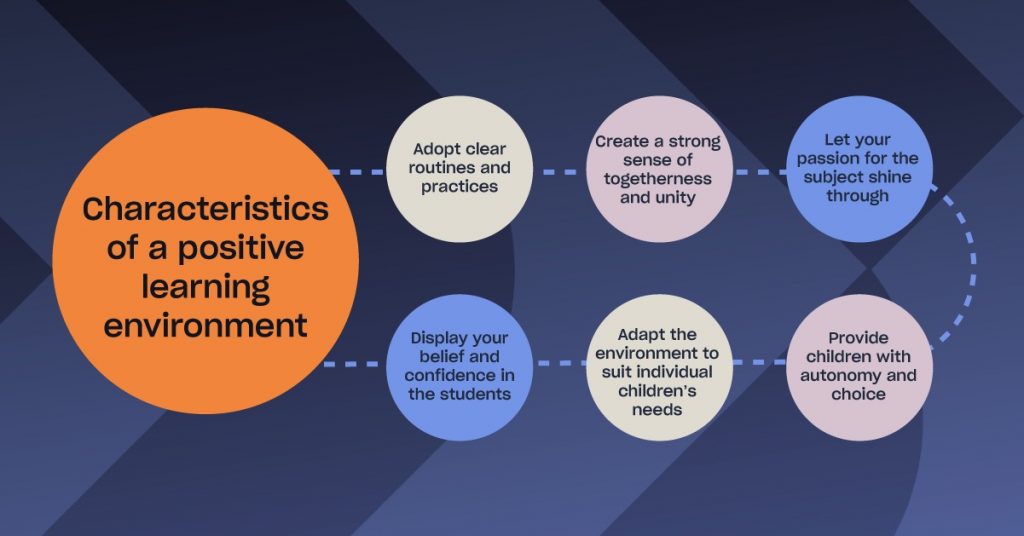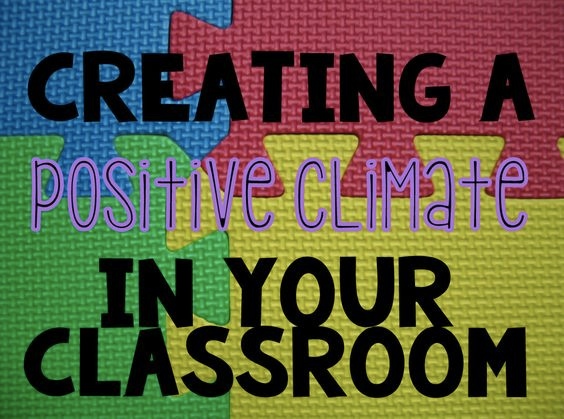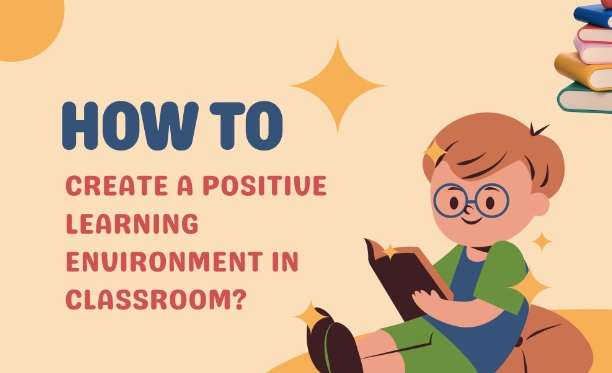- 1. Establish Clear Expectations
- 2. Foster Mutual Respect
- 3. Build a Strong Classroom Community
- 4. Encourage Active Learning
- 5. Provide Positive Feedback and Reinforcement
- 6. Cultivate a Growth Mindset
- 7. Incorporate Student Interests into Lessons
- 8. Create a Safe and Comfortable Physical Environment
- 9. Promote Autonomy and Choice
- 10. Implement Collaborative Learning Techniques
How do we create a classroom where every student feels valued, engaged, and motivated? As teachers, we all strive to create a positive learning environment where our students thrive academically and socially. But achieving this ideal can often seem like an uphill battle, leaving us questioning if we’re truly making an impact.
Math & ELA | PreK To Grade 5
Kids see fun.
You see real learning outcomes.
Watch your kids fall in love with math & reading through our scientifically designed curriculum.
Parents, try for free Teachers, use for free
This blog will explore what constitutes a positive learning environment and look at the best ways to establish this in your classroom. By the end of this blog, your students will be equipped with the right tools for success, and you’ll see the transformative power of a positive learning environment in action.
What is a Positive Learning Environment?

A positive learning environment is where students feel comfortable, valued, and ready to learn. It’s a space that supports all aspects of learning: academic, social, and emotional. In such an environment, students are encouraged to express their ideas, take risks without fear of failure, and develop a love for learning.
The characteristics that set a positive learning environment apart from a neutral or negative one are quite clear. In a positive environment for learning, there is a strong sense of community and belonging. Teachers and students treat each other with respect and kindness. The classroom is not just about getting through the curriculum; it’s about creating meaningful connections and fostering a sense of curiosity and joy in learning.
Unlike a neutral environment, where students might do just enough to get by, or a negative one, where students feel unsafe or undervalued, a positive learning environment sparks enthusiasm and motivates students to reach their full potential. Here, mistakes are seen as opportunities for growth, and diversity is celebrated. The atmosphere is positively charged and conducive to learning and personal development.
11 Ways to Create a Positive Learning Environment in the Classroom

1. Establish Clear Expectations
Creating a positive learning environment starts with setting achievable goals for student behavior and academic progress. By outlining what is expected in terms of conduct and learning outcomes, students are provided with a clear roadmap to success. For example, a teacher might expect all students to contribute at least one idea in group discussions, fostering a sense of responsibility and participation.
2. Foster Mutual Respect
Mutual respect is the cornerstone of creating learning environments that are supportive and inclusive. This means treating students with kindness and understanding and expecting the same in return. An example of this in action is implementing a ‘think before you speak’ policy, encouraging students to consider the impact of their words on others, thereby promoting a culture of respect.
3. Build a Strong Classroom Community
A strong classroom community is vital. Strategies such as group projects or class meetings where students can share their thoughts and feelings help build student relationships. This promotes a sense of belonging and support. For instance, starting each day with a quick check-in allows students to feel connected to their peers.
4. Encourage Active Learning
Active learning is key to engaging students in their learning process, making education effective and enjoyable. Interactive lessons, hands-on activities, and the strategic use of educational technology are pivotal in making learning more dynamic.
For instance, platforms like SplashLearn offer a range of interactive math and reading games that cater to individual learning styles and paces. By integrating SplashLearn into daily lessons, teachers can provide personalized learning experiences that are fun and highly educational. This approach allows students to participate actively in their learning journey, seeing real-world applications of their lessons through engaging digital content, sparking their curiosity and enthusiasm.
5. Provide Positive Feedback and Reinforcement
One key aspect of how to create a positive learning environment is through providing positive feedback and reinforcement. Acknowledging students’ efforts and achievements can significantly boost their motivation and confidence.
For instance, a simple “Well done on your improvement in math!” can make a student more eager to learn and participate. This practice encourages students and creates a supportive atmosphere where effort is recognized and valued.
Related Reading: How to Use Positive Reinforcement
6. Cultivate a Growth Mindset
Encouraging a growth mindset is essential in helping students view challenges as opportunities to learn and grow. Teachers can cultivate a positive classroom environment by fostering an attitude that abilities can be developed through dedication and hard work.
An example of this could be discussing famous personalities who failed initially but succeeded through perseverance, demonstrating that setbacks are just stepping stones to success.
7. Incorporate Student Interests into Lessons
Making learning relevant and engaging is easier when lessons are tailored to include students’ interests. This approach in how to create a positive learning environment allows students to see the value in what they are learning and how it relates to the world around them. For example, a teacher could use a student’s interest in space to teach mathematical concepts like distance and measurement, making the lesson more engaging and applicable.
8. Create a Safe and Comfortable Physical Environment
The physical classroom environment plays a significant role in learning. A well-organized, inviting classroom layout that accommodates all learners greatly enhances students’ ability to focus and engage. Ensuring enough space for group activities, a quiet corner for individual work, and displays of student work can make the classroom a more positive space. This effort towards creating a positive classroom environment ensures that every student feels comfortable and included, fostering a sense of belonging and community.
Related Reading: Best Tips For a Student-Centered Learning Environment
9. Promote Autonomy and Choice
Giving students choices in their learning is a powerful way to foster independence and encourage them to take personal investment in their education. When students can decide about their learning paths, such as choosing between different project topics or which books to read, they become more engaged and motivated. This autonomy empowers students, making them feel respected and capable, which is crucial for a positive learning experience.
10. Implement Collaborative Learning Techniques
Collaborative learning techniques like group work and peer collaboration are essential for enhancing learning outcomes and developing social skills. By working together on projects or study groups, students learn to communicate effectively, resolve conflicts, and support each other’s learning. This improves academic performance and builds community and cooperation in the classroom, preparing students for real-world teamwork and collaboration.
11. Support Emotional Well-being
Addressing students’ emotional needs and fostering resilience are vital components of a supportive learning environment. Strategies such as regular check-ins, providing a safe space for students to express their feelings, and teaching coping skills can significantly impact their emotional well-being.
Teachers can also introduce mindfulness activities or stress management techniques to help students navigate their emotions. By prioritizing emotional health, teachers create a nurturing space where students feel safe and supported, enabling them to confidently face challenges.
Related Reading: Best Strategies to Develop Mindfulness in Kids
5 Importance of a Positive Learning Environment

1. Enhances Academic Achievement
A positive learning atmosphere is crucial for better academic performance. When students feel supported and valued in their learning environment, their motivation and ability to focus improve significantly. This conducive learning atmosphere boosts their confidence and encourages a deeper engagement with the curriculum, leading to higher academic achievements.
2. Improves Student Engagement
Creating a good classroom environment directly impacts student interest and participation in learning. In a positive classroom setting, students are likelier to be curious, ask questions, and take active roles in their education. This heightened engagement is a testament to an environment where students feel their contributions are valued, and their learning needs are met.
Related Reading: Best Strategies to Better Engage With Students
3. Fosters Social and Emotional Development
A supportive learning environment is critical in developing students’ social skills and emotional intelligence. Students learn to communicate effectively, empathize with others, and manage their emotions in such settings. These skills are fundamental for personal growth and building healthy relationships inside and outside the classroom.
Related Reading: Fun Socio-Emotional Learning Activities for Classroom
4. Reduces Behavioral Problems
Positive relationships and clear expectations are key to reducing classroom disruptions. When students understand the behavioral standards expected of them and the rationale behind these expectations, they are more likely to comply. Moreover, a positive environment that fosters respect and understanding among students and teachers minimizes conflicts and behavioral issues.
5. Supports Diverse Learning Needs
Adapting the learning environment to meet the needs of all students is essential for promoting inclusivity and equity. A positive environment recognizes and accommodates its students’ varied learning styles, abilities, and backgrounds, ensuring that every student has access to the resources and support they need to succeed.
Conclusion
Creating a positive learning environment fosters academic success, student engagement, and overall well-being. By implementing the strategies discussed, educators can build a supportive and inclusive classroom that encourages every student to reach their full potential.
Related Reading: How to Build a Positive Teacher-Student Relationship
Frequently Asked Questions (FAQs)
What is an effective learning environment?
An effective learning environment is one that promotes student engagement, facilitates academic achievement, supports social and emotional growth, and adapts to the diverse needs of all students, thereby enabling them to learn and succeed.
What are the 3 components of the learning environment?
The three components of the learning environment are the physical surroundings (classroom setup and design), the social context (relationships and interactions), and the pedagogical elements (teaching methods and curriculum).
What does a positive classroom environment look like?
A positive classroom environment looks welcoming and safe, where students feel valued and motivated to learn. It’s a place where achievements are celebrated, mistakes are seen as learning opportunities, and every student’s voice is heard and respected.
























